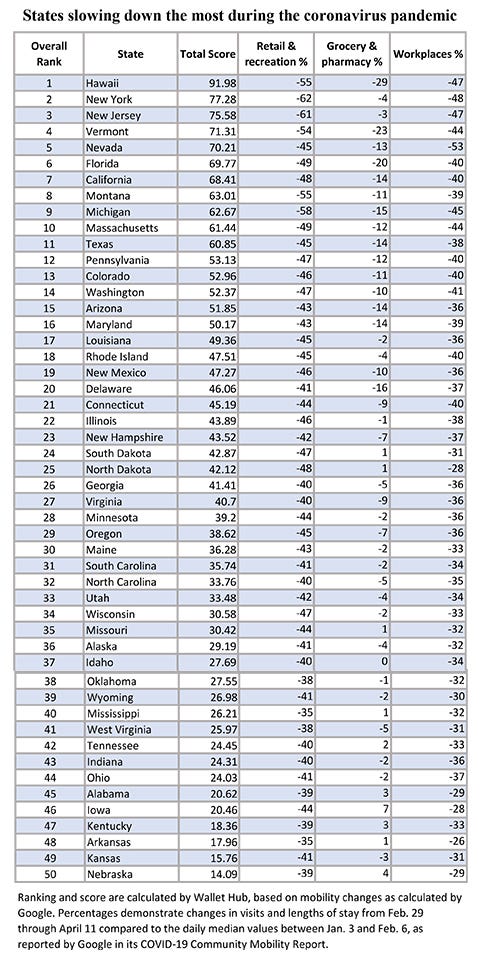Coronavirus greatly reduces Americans' travel—but they keep going to grocery stores
WalletHub's analysis of Google data ranks states based on percentage of residents who reduced visits to retail stores, groceries and places of employment.
April 23, 2020

As the new coronavirus spread across the country, some people began staying home to protect themselves from exposure—or because their state or local officials ordered them to.
This reduction in travel affected some industries more than others: Some industries have naturally suffered from this more than others: Nationwide, retail and recreation visits are down 45% from their normal rates, while transit stations have seen a decrease of 49%, for example.
But, as most people know, grocery stores didn't see such drastic drops. Across the United States, grocery and pharmacy visits declined only 7%, according to data collected by Google.
However, the drop-off in people leaving their homes has been less pronounced in some states than others.
To find out which states are slowing down most during the COVID-19 pandemic, WalletHub compared the 50 states across six key metrics: retail & recreation, grocery & pharmacy, parks, transit stations, workplaces and homes. Each metric measures the percentage point increase or decrease in visits to various types of places due to coronavirus.
Wallet Hub sourced data from Google's COVID-19 Community Mobility Report, which outlined these broader categories:
Retail & recreation—restaurants, cafes, shopping centers, theme parks, museums, libraries and movie theaters.
Grocery & pharmacy—grocery markets, food warehouses, famers markets, specialty food shops, drug stores and pharmacies.
Parks—national parks, public beaches, marinas, dog parks, plazas and public gardens.
Transit stations—transportation hubs such as subway, bus and train stations.
Google collects aggregated, anonymous data via Google Maps location history setting, which is turned off by default, the company says. The data collected depends on user settings and connectivity, as well as the company's privacy threshold. If a location isn't busy enough to ensure anonymity, it isn't included in that day's collection.
Because of the different characteristics of various regions or states—urban areas versus rural locales, for example—Google suggests not using the data to compare the changes between states.
Google mobility reports, which include statistics for all six metrics, can be downloaded for countries, states and smaller regions such as counties.
This chart, which you can download as a PDF, provides WalletHub's ranking and overall scores, as well as the percentage changes in mobility for retail & recreation, grocery & pharmacy, and workplaces for each state.

Source: WalletHub
You May Also Like


